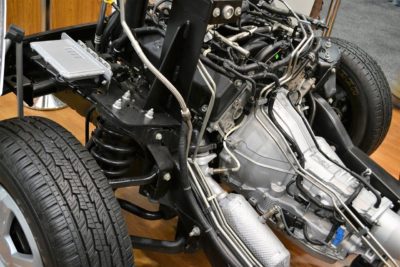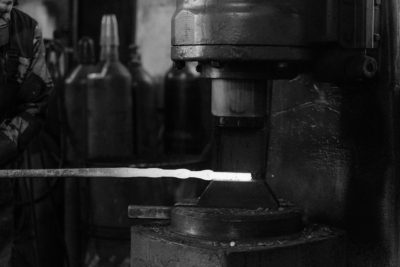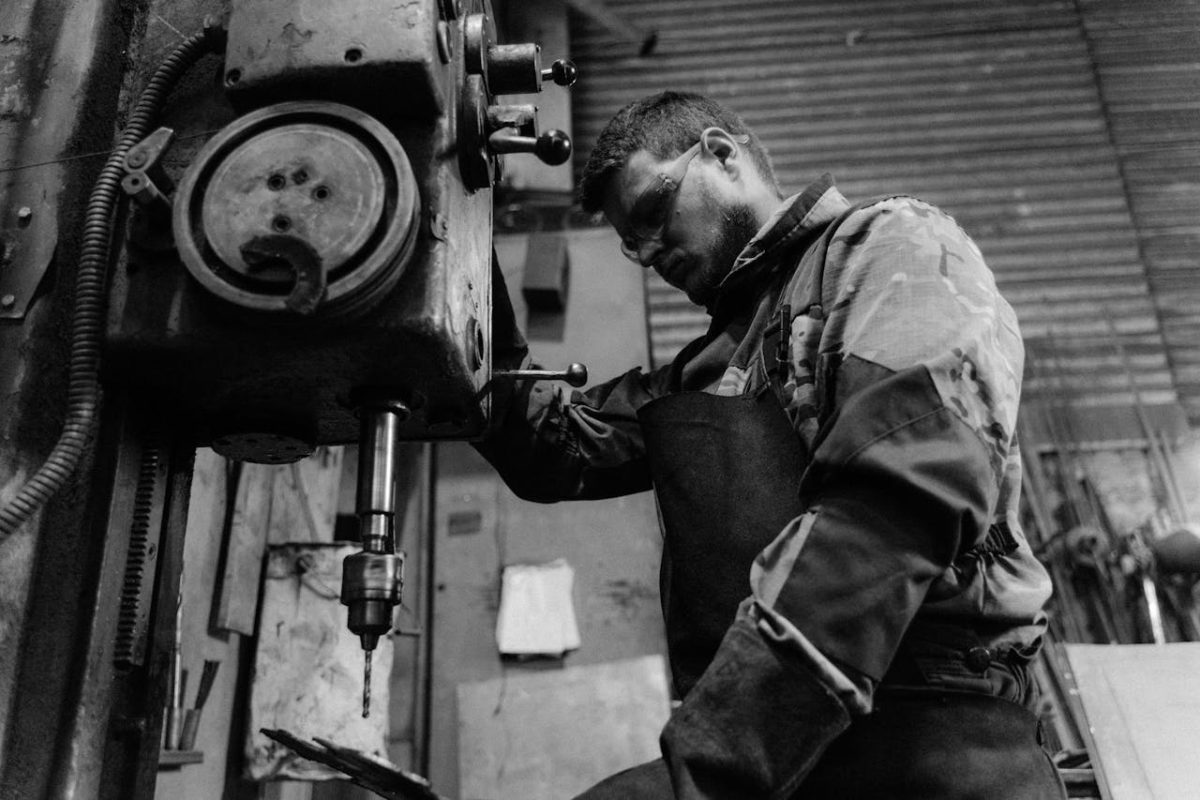In the realm of modern manufacturing, aluminum cold forged parts are essential components that find applications across diverse industries. From motor vehicle manufacturing, forestry, electronics to the aeronautic industry, the adoption of aluminum forged parts has grown exponentially.
Aluminum products are getting a lot of attention in most industries because of their lightweight and corrosion resistance features. The availability of aluminum alloys that offer impressive strength and durability has made the material a favorite in the motor vehicle industry and aerospace.
In this comprehensive guide, we will explore the applications, advantages, and maintenance guidelines pertaining to aluminum cold forged parts. We will also help novice forging enthusiasts understand the cold forging technology. Read more:
Understanding Cold Forging
Cold forging is a metalworking process that involves shaping metal at room temperature through the application of compressive forces. Unlike hot forging, which requires heating the metal above its recrystallization temperature, cold forging utilizes the inherent strength and ductility of the material to achieve precise shaping without the need for extreme temperatures. This process offers several advantages, including increased material strength, improved dimensional accuracy, and reduced material waste.
In cold forging, a blank or billet of metal is placed into a die cavity and subjected to high pressure using a punch or hammer. The compressive forces cause the metal to flow and fill the contours of the die, resulting in the desired shape of the finished part. Cold forging can be performed using various techniques, including extrusion, coining, bending, and upsetting, allowing for the production of a wide range of complex geometries.
Aluminum Cold Forged Parts
Aluminum cold forged parts are integral components used in numerous industries due to their exceptional properties and advantages. Among the various aluminum alloys available, the 2024,5083, and 7475 among others, alloys are among the most common forging applications. Known for their high strength-to-weight ratio, corrosion resistance, and excellent fatigue resistance, these alloys are well-suited for manufacturing critical components in a range of industries.
Aluminum cold forged Parts Offer Several Benefits
High Strength:
Through the cold forging process, aluminum parts undergo a transformation, gaining enhanced strength and durability. This newfound strength enables them to effectively withstand high loads and stresses commonly encountered in demanding applications across industries.
Lightweight:
Leveraging the innate lightweight property of aluminum, cold forged parts provide significant weight savings. This characteristic is particularly advantageous in weight-sensitive applications such as aerospace and automotive industries, where reducing weight can lead to improved fuel efficiency and overall performance.
Corrosion Resistance:
Aluminum’s natural ability to form a protective oxide layer on its surface makes cold forged parts highly resistant to corrosion. This protective layer acts as a barrier, shielding the underlying metal from corrosive elements present in various environments, ensuring prolonged durability and reliability even in harsh conditions.
Precision Manufacturing:
Cold forging enables the precise shaping of aluminum parts with tight tolerances, allowing manufacturers to achieve complex geometries and intricate designs without the need for secondary machining operations. This precision manufacturing process not only ensures dimensional accuracy but also enhances production efficiency by reducing material waste and minimizing the need for additional finishing processes.
Environmental Sustainability:
Cold forging offers environmental benefits by consuming less energy compared to traditional machining methods. Additionally, aluminum is highly recyclable, and cold forging further contributes to sustainability by minimizing material waste and reducing the overall environmental footprint of manufacturing operations.
Applications of Aluminum Cold Forged Parts 2024

Aerospace Industry:
The aerospace sector relies heavily on aluminum cold forged parts for various critical components. In aircraft construction, the 2024 alloy is commonly used to manufacture structural elements such as wing spars, fuselage frames, and wing ribs. The alloy’s high strength-to-weight ratio and excellent fatigue resistance make it well-suited for withstanding the demanding conditions encountered in flight.
Automotive Sector:
In the automotive industry, aluminum cold forged parts play a vital role in enhancing vehicle performance and fuel efficiency. Components such as suspension systems, transmission parts, and steering components benefit from the lightweight nature and corrosion resistance of the 2024 alloy. By incorporating aluminum forged parts into vehicle designs, manufacturers can reduce overall weight and improve handling without compromising on strength or durability.
Sporting Goods:
Aluminum cold forged parts are widely used in the production of sporting goods and equipment. From bicycle frames to tennis racket components, the 2024 alloy offers the perfect balance of strength and lightweight properties desired in sports equipment. Athletes and enthusiasts alike benefit from the durability and performance of aluminum forged parts in various recreational activities.
Marine Applications:
The marine industry relies on aluminum cold forged parts for constructing boats, yachts, and other watercraft. The 2024 alloy’s corrosion resistance, even in saltwater environments, makes it an ideal choice for marine applications where durability and longevity are paramount. Boat hulls, masts, and structural components made from aluminum forged parts offer superior performance and reliability in challenging marine conditions.
Electronics and Gadgets:
With the increasing demand for lightweight and durable electronic devices, aluminum cold forged parts have found their way into the manufacturing of smartphones, laptops, and consumer electronics. The 2024 alloy provides the necessary structural integrity to support delicate electronic components while keeping the overall weight of devices low. By incorporating aluminum forged parts into electronic gadgets, manufacturers can achieve sleek designs without compromising on durability or performance.
Household Appliances
Many aluminum household appliances today, including bathroom hardware are also cold forged. In fact, most of the aluminum appliances we use in our homes have been cold forged. This includes parts of refrigerators, washing machines, dishwashers, and air conditioning units. Towel bars, bathroom hooks, soap dishes, and toilet paper holders are some of the hardware from aluminum cold forging.
Advantages of Aluminum Cold Forged Parts 2024
Part of the reason why the proliferation of aluminum cold forged parts in various industries is the many benefits they offer over the likes of steel and other materials. Here are some of the major advantages of using cold forged aluminum parts:
High Strength-to-Weight Ratio:
The 2024 alloy offers an excellent strength-to-weight ratio, making it ideal for applications where weight savings are critical. Aluminum cold forged parts made from this alloy provide the necessary strength and durability while minimizing overall weight, which is particularly advantageous in the aerospace, automotive, and sporting goods industries.
Exceptional Fatigue Resistance:
Cold forging enhances the fatigue resistance of aluminum parts, making them capable of withstanding repetitive loading cycles without failure. This is especially important in applications where components are subjected to dynamic loads or cyclic stresses, such as aircraft structures and automotive suspension systems.
Corrosion Resistance:
Aluminum cold forged parts 2024 exhibit good corrosion resistance, particularly in atmospheric and marine environments. The natural oxide layer that forms on the surface of aluminum provides a protective barrier against corrosion, ensuring long-term durability and reliability in harsh operating conditions.
Precision Manufacturing:
Cold forging allows for the precise shaping of aluminum parts with tight tolerances, eliminating the need for secondary machining operations. This results in cost savings and improved production efficiency, as complex geometries can be achieved in a single manufacturing step.
Environmental Sustainability:
Aluminum is a highly recyclable material, and cold forging consumes less energy compared to traditional machining processes. By using aluminum cold forged parts, manufacturers can reduce their environmental footprint and contribute to sustainable manufacturing practices.
Maintenance Guidelines for Aluminum Cold Forged Parts 2024

Proper maintenance is essential for ensuring the longevity and optimal performance of aluminum cold forged parts. Here are some guidelines to follow:
Regular Inspection:
Schedule periodic inspections of aluminum forged parts to detect any signs of wear, corrosion, or damage. Visual inspections can help identify surface imperfections, while more thorough examinations, such as non-destructive testing, are ideal for critical components.
Cleaning:
Keep aluminum forged parts clean by removing dirt, grease, and other contaminants regularly. Use mild detergents and non-abrasive tools to clean the surface, and avoid harsh chemicals or abrasive materials that could scratch or damage the aluminum.
Corrosion Prevention:
Although aluminum is naturally corrosion-resistant, exposure to certain environments can still lead to corrosion over time. Apply protective coatings or finishes to enhance the corrosion resistance of aluminum forged parts. Store components in dry and well-ventilated areas to minimize the risk of corrosion.
Lubrication:
For moving parts or components subject to friction, proper lubrication is essential to reduce wear and prolong service life. Use lubricants specifically designed for aluminum components and follow manufacturer recommendations for application frequency and quantity.
Avoiding Abrasive Contact:
To prevent scratching or damaging the surface of aluminum forged parts, avoid contact with abrasive materials or harsh surfaces. Use appropriate handling and storage methods to minimize the risk of surface damage during transportation or assembly processes.
Conclusion
Aluminum cold forged parts play a crucial role in various industries due to their exceptional properties and advantages. From aerospace and automotive applications to sporting goods and electronics, aluminum forged parts offer strength, durability, and lightweight characteristics which are ideal in modern manufacturing. By following proper maintenance guidelines, manufacturers can ensure the longevity and optimal performance of aluminum cold forged parts, contributing to the reliability and efficiency of their products.

